Asked
Modified 3 years, 10 months ago
Viewed 9k times
I have this wheelbarrow with tubeless tire, I had to replace it with the new one, however I don't see how to pump it! The tire is quite stiff, and it was tricky to put it on the rim, but now it looks like the tire isn't well adjusted to the rim. Did I do something wrong? How do people normally pump this type of tires?
2
Looks like the typical gap one gets when mounting a tubeless tire. You'll need to get the bead to seat against the rim as you pump air (hopefully quickly) into the tire - a hand pump might not do it.
Sometimes you can jiggle the tire to effect a temporary seal around the bead as your compressor dumps air in. Using a clip-on tire chuck will help.
Some folks "squeeze" the tire with a strap around the tread area. I've seen a device called a bead expander, and this guy shows the use of some large tie-wraps to achieve the same thing.
5
If you're not afraid of a little fire then this could work:
https://youtu.be/DJiqbAVsxRY
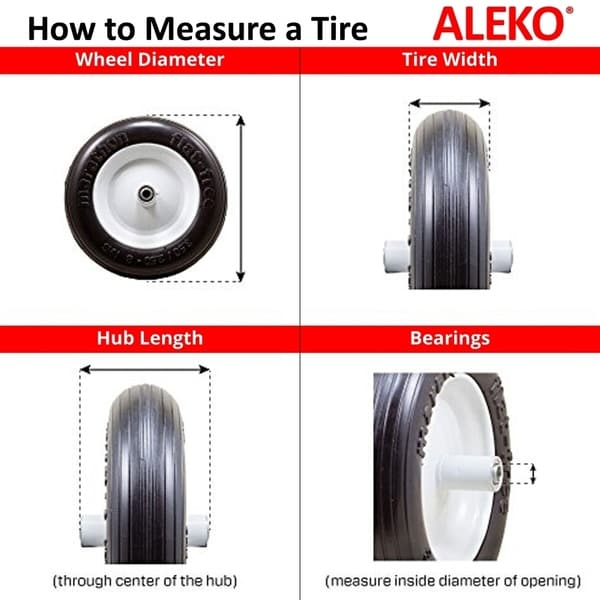 You should do this by beating the tire with a long stick to avoid personal damage in the event of a tire explosion.
You should do this by beating the tire with a long stick to avoid personal damage in the event of a tire explosion.16
Take it to the local tire store, and ask them to inflate it - they'll use their bead-blaster machine to mount it. Should be little to no cost.
The next time it happens, ask the tire store to put an innertube in the tire. That solves the problem forever. (Only do it the 'next time', because it may never happen again..)
4
I've had decent luck using a couple of plastic bags and even saran wrap.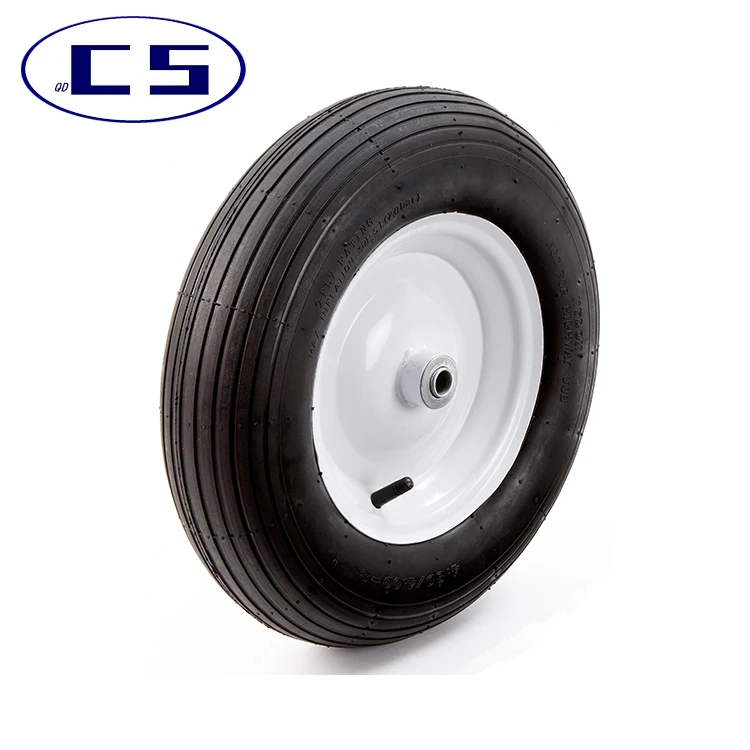 I rolled them up and placed them near the rim so that it fills in the gap enough to get a better seal. The pump then works well enough to expand the tire.
I rolled them up and placed them near the rim so that it fills in the gap enough to get a better seal. The pump then works well enough to expand the tire.
The gap shown in the photo is small enough for this trick to work.
Long term solution is to have it filled with foam.
The people who recommend a strap around the perimeter of the tire are correct, and such straps, often inflatable, are made for that purpose. However, a couple of times in a pinch, I have removed the belt I was wearing and wrapped it around the tire and pulled it in as tightly as I could. This has actually worked for me. You should probably remov the valve stem to let the air in faster and thus with more force.
2
I've likewise used my belt. Put the belt around the tread of the tire, squeeze the tread inward to get the bead to push out and set against the rim. Then inflate the tire.
I've had to do it several times over many years, with the same tire.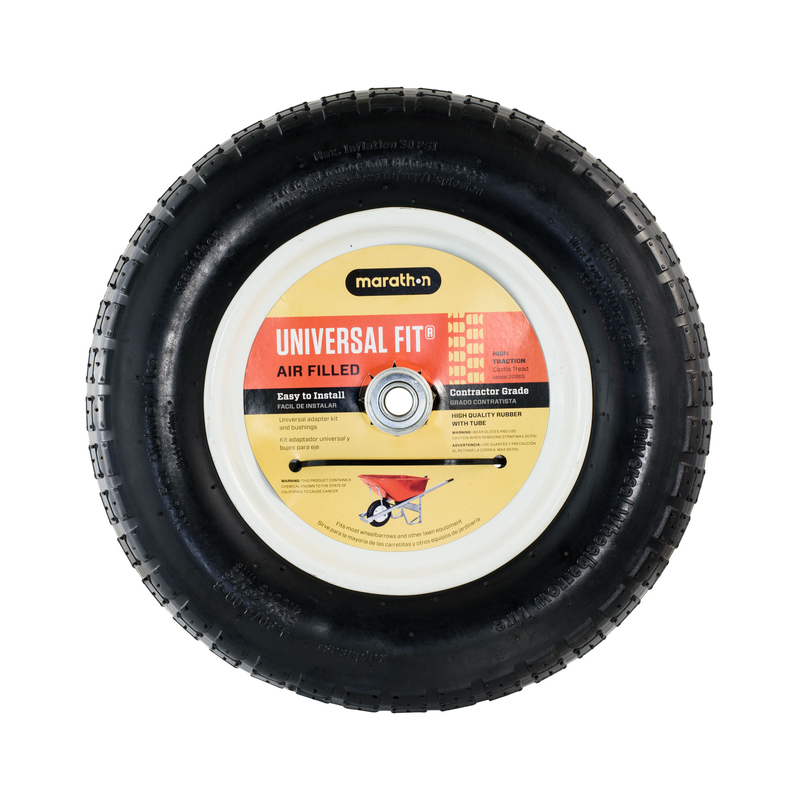 The tire holds air just fine, for months, even under weight. But after going un-used for several seasons it eventually leaks out, enough to loosen the bead and lose the rest.
The tire holds air just fine, for months, even under weight. But after going un-used for several seasons it eventually leaks out, enough to loosen the bead and lose the rest.
A strap with a come-along ratchet is easier, but a regular waist belt works in a pinch.
If the tire went flat it has a leak. Just reinflating the tire will not fix the problem. The most likely causes are a tire puncture, or a bead leak from either degraded rubber on the tire or rust on the wheel (not likely in your case with a plastic wheel). The easiest solution is to remove the wheel, the tire and the Schrader valve. Purchase an inner tube of the correct size. Most big box stores carry them. If you have trouble finding the correct size for a wheelbarrow look for a tube designed for a snow blower or lawnmower.
4
Sign up using Google
Sign up using Facebook
Sign up using Email and Password
Required, but never shown
Required, but never shown
By clicking “Post Your Answer”, you agree to our terms of service, privacy policy and cookie policy
`;
Home
Fact Checked
Christina EdwardsFixing a flat wheelbarrow tire, as opposed to buying a new one, is something that many do-it-yourselfers can accomplish in just a short amount of time. Not only does this often save money, it will reduce the impact on the environment. There are a few methods for fixing a flat wheelbarrow tire, depending on the reason it's flat. If your tubeless wheelbarrow tire has been punctured, using a tire repair kit, which can be found at most automotive or DIY stores, could be the answer. If the tire is leaking from the area where it sits on the rim, the tire probably just needs to be reset, which can be accomplished using ordinary dish soap or a ratchet strap.
Not only does this often save money, it will reduce the impact on the environment. There are a few methods for fixing a flat wheelbarrow tire, depending on the reason it's flat. If your tubeless wheelbarrow tire has been punctured, using a tire repair kit, which can be found at most automotive or DIY stores, could be the answer. If the tire is leaking from the area where it sits on the rim, the tire probably just needs to be reset, which can be accomplished using ordinary dish soap or a ratchet strap.
Puncture holes in tubeless wheelbarrow tires are not uncommon, because of the strain put on these garden supplies. The first step to repairing them is to find out exactly where the tire has been punctured. Sometimes a nail or screw can be seen sticking out of the tire, but other times, the hole may be a little harder to find.
The first step to repairing them is to find out exactly where the tire has been punctured. Sometimes a nail or screw can be seen sticking out of the tire, but other times, the hole may be a little harder to find.
To pin down a puncture hole in a flat wheelbarrow tire, a solution of soapy water can be used, mixing the soap and water at a one to one ratio. Next, apply this mixture to the tire and add air with an air compressor. The location of a puncture can be found wherever the soap mixture starts to bubble, and it should be marked using chalk or a small strip of tape.
Most tubeless tire repair kits come with one or more plugs and two tools to aid you with the repair. The long, circular file with a handle, referred to as a tire reaming tool, is the first one that should be used. Push this into the hole in the tire and twist it in and out a few times to roughen the edges of the hole. This will mar the edges of the hole, which will help the plug stay in place.
The long, circular file with a handle, referred to as a tire reaming tool, is the first one that should be used. Push this into the hole in the tire and twist it in and out a few times to roughen the edges of the hole. This will mar the edges of the hole, which will help the plug stay in place.
After the hole in the flat wheelbarrow tire has been reamed, the next step is to add the plug. The other tool that come in these kits often resembles a larger version of the eye of a needle attached to a handle on the other end. The plug should be put through this needle, and half of it should be hanging out on either side.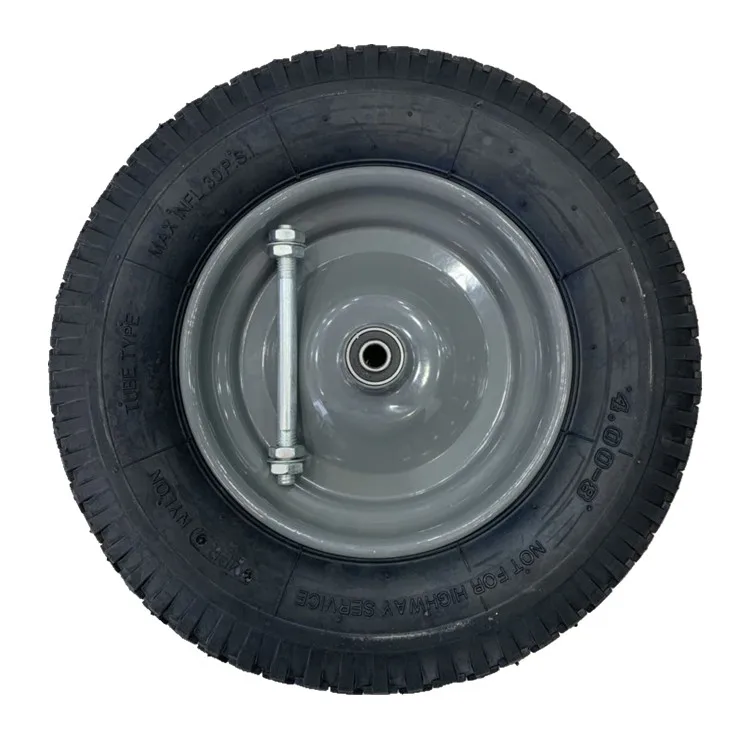 Push this through the hole until there is roughly 0.25 to 0.5 inch (0.6 to 1.3 cm) of the plug sticking out of the outside of the tire. Yank the tool out of the tire, leaving the plug inside, trim off any excess plug, and re-inflate the tire.
Push this through the hole until there is roughly 0.25 to 0.5 inch (0.6 to 1.3 cm) of the plug sticking out of the outside of the tire. Yank the tool out of the tire, leaving the plug inside, trim off any excess plug, and re-inflate the tire.
If there is a leak around the tire where it sits on the rim, called the bead, the flat wheelbarrow tire most likely needs to be reset. Before attempting this, first clean the bead and rim thoroughly. After it has been cleaned, coat the rim with a generous amount of soap, preferably dish soap. Inflate the tire using a compressor until the tire bead sets on the rim, which can usually be heard as a sharp popping noise.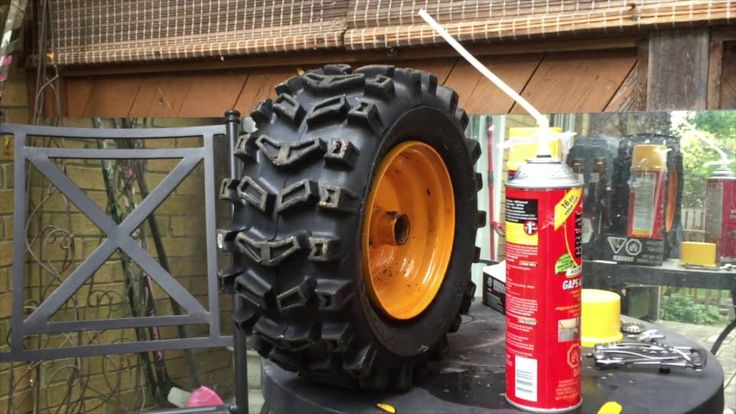
If the tire bead fails to set on the rim using the soap method, a ratchet strap or heavy rope may be used. To do this, wrap the strap around the tread of the tire and tighten it. Add air until the bead sets on the rim. Remove the strap, and continue to add air until the tire is fully inflated.
Some companies have begun manufacturing wheelbarrow tires that never go flat.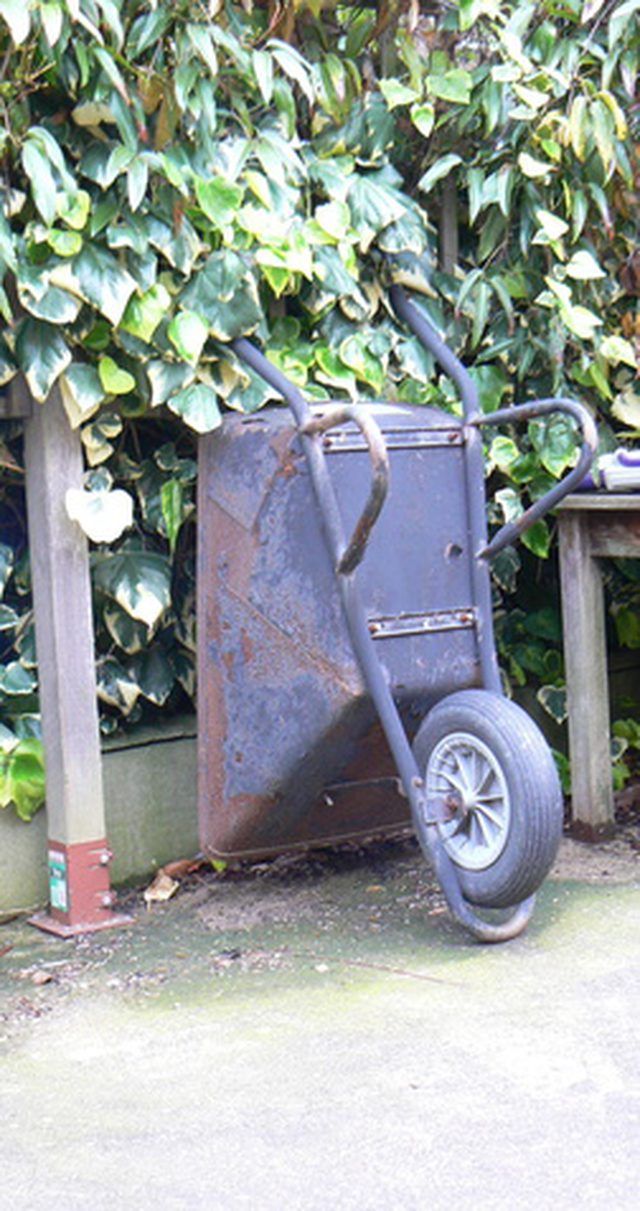 These are typically made from polyurethane foam with tiny air pockets throughout, and they are sold with or without the rim. A flat-free wheelbarrow tire is designed to let you go about your yard work without the risk of putting damaging holes in the tire.
These are typically made from polyurethane foam with tiny air pockets throughout, and they are sold with or without the rim. A flat-free wheelbarrow tire is designed to let you go about your yard work without the risk of putting damaging holes in the tire.
Contents:
Every gardener and summer resident constantly needs to transport cargo across the territory of the plot or garden.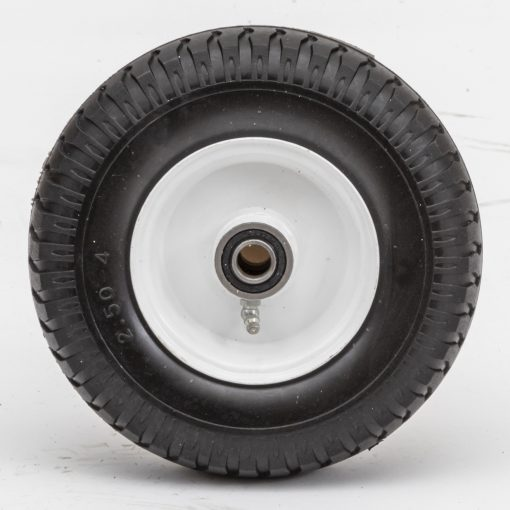 The need to transport fertilizers for feeding plants or building materials can arise at any time, so the purchase of a garden wheelbarrow is often required. Devices for transporting goods over short distances differ in many parameters: size, number of rollers, tire material, etc. And you need to pay attention to all this when choosing a wheelbarrow in a store.
The need to transport fertilizers for feeding plants or building materials can arise at any time, so the purchase of a garden wheelbarrow is often required. Devices for transporting goods over short distances differ in many parameters: size, number of rollers, tire material, etc. And you need to pay attention to all this when choosing a wheelbarrow in a store.
The wheelbarrow for a garden wheelbarrow can be pneumatic (with a tire into which air is pumped), molded rubber and polyurethane. At the same time, the material of the disk is not so important, since it is the tire that is subjected to the maximum load during operation.
Wheelbarrow wheel
The rim for pneumatic wheels is based on a treaded tire. Inside, there is usually a chamber, which, for reliability, is made using two layers of rubber. Discs can be made of metal or polypropylene. If the manufacturer provides a bearing at the fixing point, then the trolley will move more smoothly.
Advantages:
Pneumatic wheel
Garden cart wheels with solid rubber are made of high quality materials. The disc is made from cast steel. Additionally, galvanizing is carried out, for reliability and protection against metal corrosion. Thanks to this, high reliability of the design, strength and durability are achieved, in addition, the design features of the connection allow you to quickly change the wheel.
Minus - sufficiently low load limit. It is impossible to load such a trolley with a mass exceeding 200 kg. In addition, when driving there is a slight shaking, so these carts are not suitable for transporting fragile goods.
Please note! Since the tread tire is molded, the wheelbarrow can be used on rough surfaces where pneumatic specimens deteriorate quickly.
This material is an alternative to molded and pneumatic options. A polyurethane tire cannot be pierced, just like a cast one. At the same time, the ride and running characteristics are the same as those of pneumatic wheelbarrows. Polyurethane is characterized by high depreciation properties, wear resistance, durability. No additional maintenance is required to maintain performance.
Benefits of polyurethane wheels:
Made of polyurethane foam
Garden strawberry varieties
The main parts of the trolley and their functions: Its main functions are cushioning and keeping the device on the go. If the tube deflates, the constant bending of a hard tread tire will cause it to deteriorate.
If the tube deflates, the constant bending of a hard tread tire will cause it to deteriorate.
Wheel arrangement
Why the leaves of the garden rose fall
The choice should be determined by the place for use. If you have to use on an area with a lot of stones or debris, you should choose a tire with molded rubber or urethane foam. If the area with a lot of bumps, it is better to choose pneumatic.
If you have to use on an area with a lot of stones or debris, you should choose a tire with molded rubber or urethane foam. If the area with a lot of bumps, it is better to choose pneumatic.
Important! The larger the wheel, the easier it is to pull the cart.
One-wheel garden wheelbarrow
When buying a tire, it is necessary to indicate the marking with the pressure with which it can be inflated. Typically, this value is in the range of 25 to 70 P.S.I. However, it is advisable not to inflate more than half of the maximum pressure of the tire.
Garden cart wheels often go bad. For replacement, the following steps will have to be taken:

How to change the tube on a garden wheelbarrow
The main cause of failure is the presence of a small amount of natural rubber in the composition. Phenols are often used instead. If used for a long time or at elevated temperatures, an unpleasant odor appears. At lower temperatures, the elasticity of the wheels is lost.
The choice of a garden wheelbarrow should be approached carefully, and special attention should be paid to the wheel, since it is it that most often fails after 1-2 years.
four one vote
Article rating
Author:
Irina Khryukina Over time, any villager and summer resident gets a lot of various wheeled vehicles that require constant attention and care, including the repair of pneumatic tires and their regular paging.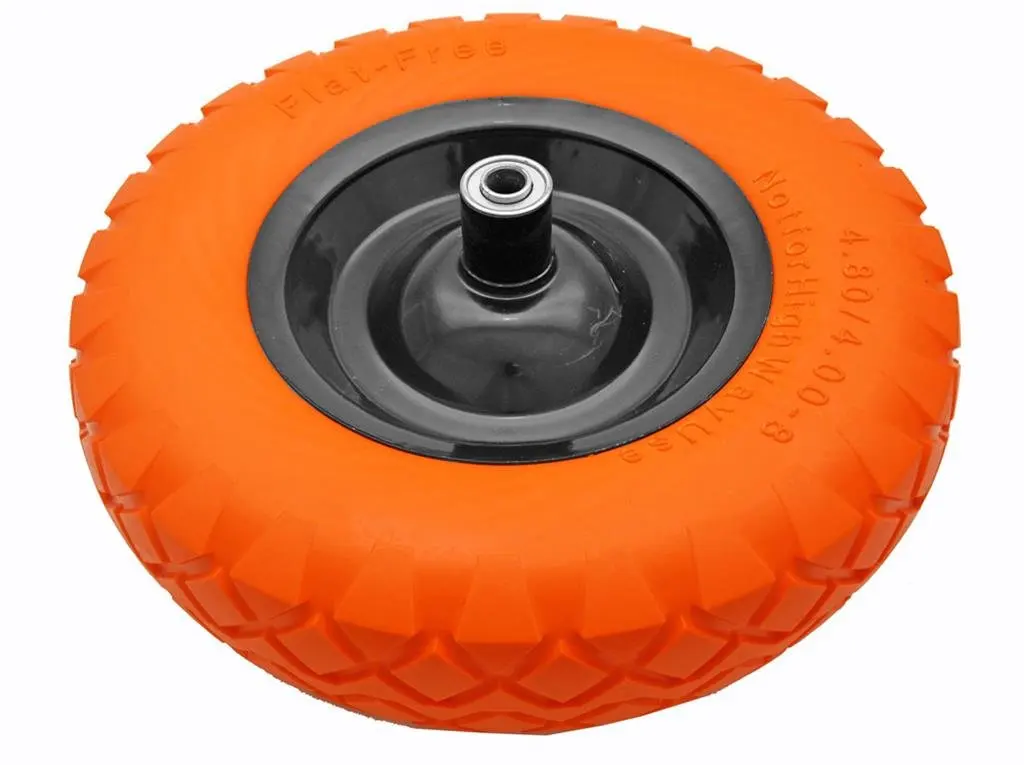 And it often happens that at the most necessary moment the wheels of turn out to be flat. And as technology ages, this happens more and more often. For example, these troubles began to haunt me constantly, and especially often in winter, in the most severe frost. And that's even worse.
And it often happens that at the most necessary moment the wheels of turn out to be flat. And as technology ages, this happens more and more often. For example, these troubles began to haunt me constantly, and especially often in winter, in the most severe frost. And that's even worse.
To fill the wheel tire with foam, you first need to drill several holes in the rim with a diameter of 10 mm ...
Finally, I got tired of it, and I solved the problem radically - I “pumped up” the tire not with air, but with polyurethane foam. I first tried filling the tire with foam through the nipple hole. It turned out, but not entirely successful - in some places, due to traffic jams, air sacs remained unfilled with foam. In addition, a significant part of the foam from the hole of the nipple squeezed back.
But the trouble is the beginning! After trying several different options, I eventually found a way to fill the tire with foam without plugs or air pockets. To do this, I drilled several holes 010 mm around the circumference of the wheel disk in such a way that the tube from the foam can freely enter into them. Before starting to fill the tire with foam, it is necessary to prepare several wooden plugs-pegs (according to the number of drilled holes in the disk), which should fit tightly into these holes and prevent the foam from breaking free.
To do this, I drilled several holes 010 mm around the circumference of the wheel disk in such a way that the tube from the foam can freely enter into them. Before starting to fill the tire with foam, it is necessary to prepare several wooden plugs-pegs (according to the number of drilled holes in the disk), which should fit tightly into these holes and prevent the foam from breaking free.
We insert the canister tube into any of the holes drilled in the disk and start the foam supply.
As soon as the first traces of foam that have reached it appear in the adjacent hole, we stop the supply from the can and immediately plug the first hole of the plugs tightly with a peg. After that, you can start feeding foam into the next hole. Then to the next...
In the same way, you can fill the tires of any other wheeled equipment, such as a garden cart, with foam.
Fill the tire with foam as follows. We insert the tube of the can into any of the holes drilled in the disk and start the flow of foam.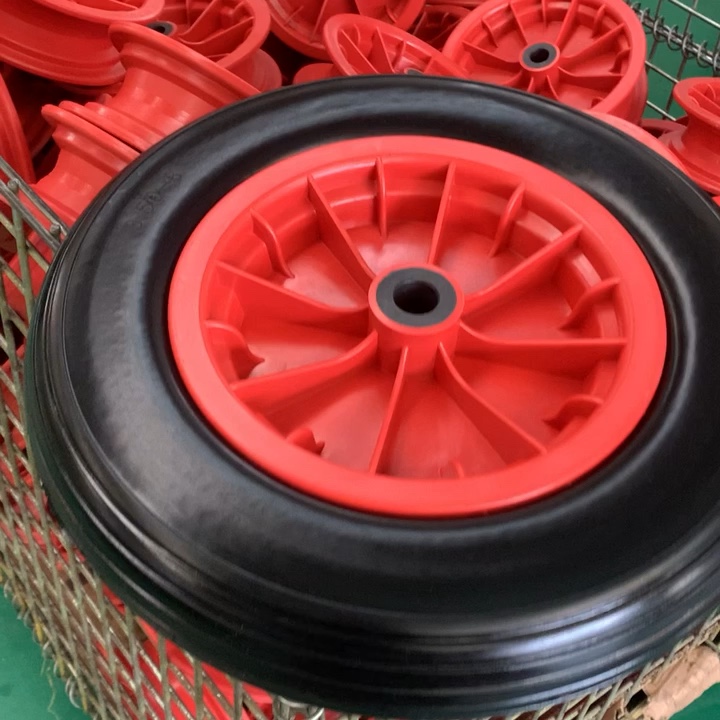 As soon as the first traces of the foam that has reached it appear in the adjacent hole, we stop the supply from the can and immediately plug the first hole tightly with a peg. After that, you can start feeding foam into the next hole. Then to the next. The last hole, as a rule, no longer needs to be foamed, and as soon as foam appears from it, you just need to plug it with a peg plug. With this sequence of filling, air sacs usually do not remain.
As soon as the first traces of the foam that has reached it appear in the adjacent hole, we stop the supply from the can and immediately plug the first hole tightly with a peg. After that, you can start feeding foam into the next hole. Then to the next. The last hole, as a rule, no longer needs to be foamed, and as soon as foam appears from it, you just need to plug it with a peg plug. With this sequence of filling, air sacs usually do not remain.
The process of self-vulcanization of the foam inside the tire - in a closed volume without air access - takes a little longer than under normal conditions. The operation of foam-filled wheels can be started no earlier than in a day. And with a large volume of tires, it is better to wait at least two days.
I have been using this technology for filling tires with foam for more than 10 years, and the first foamed tire is still working properly today, although I use it without any discounts both in winter and in summer. For several years, one of the wheels of my old truck was filled with foam.